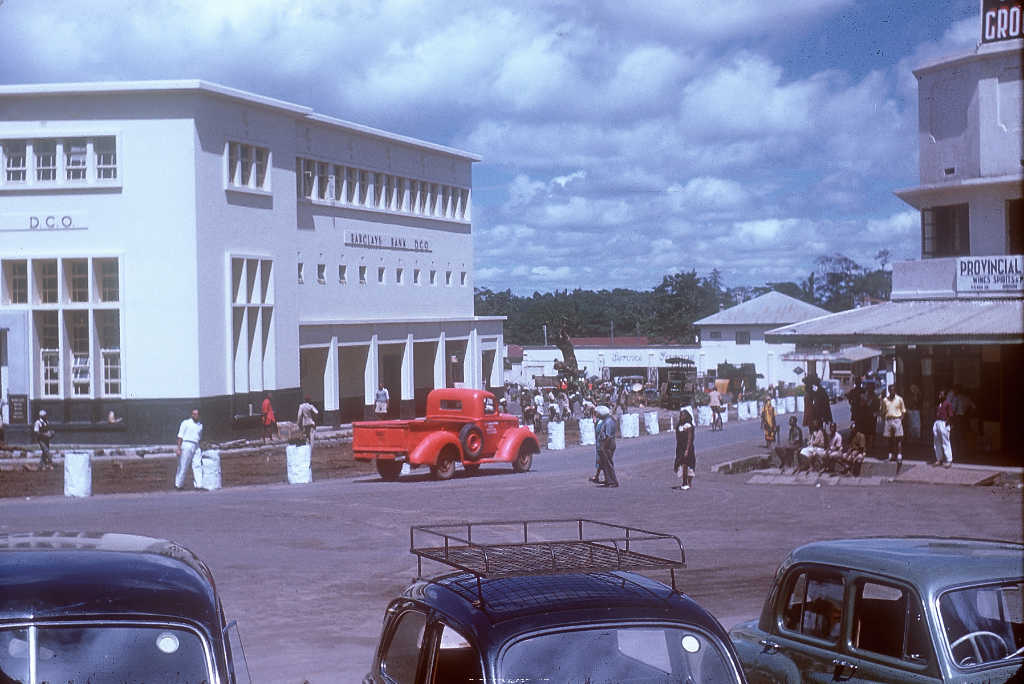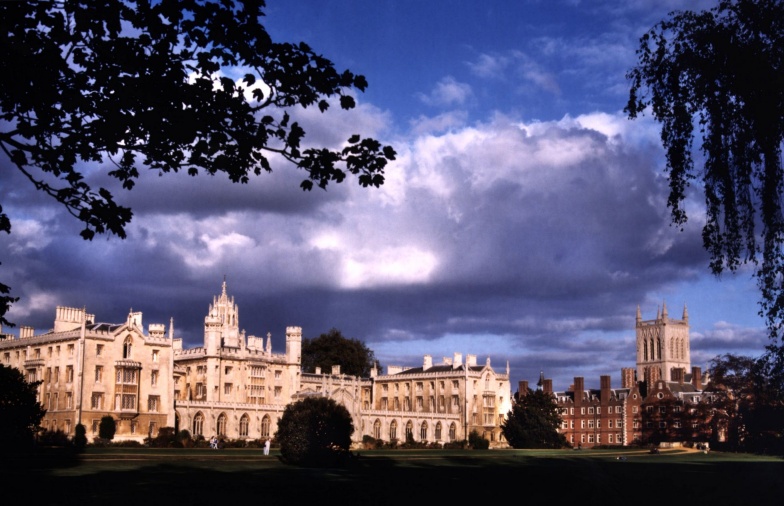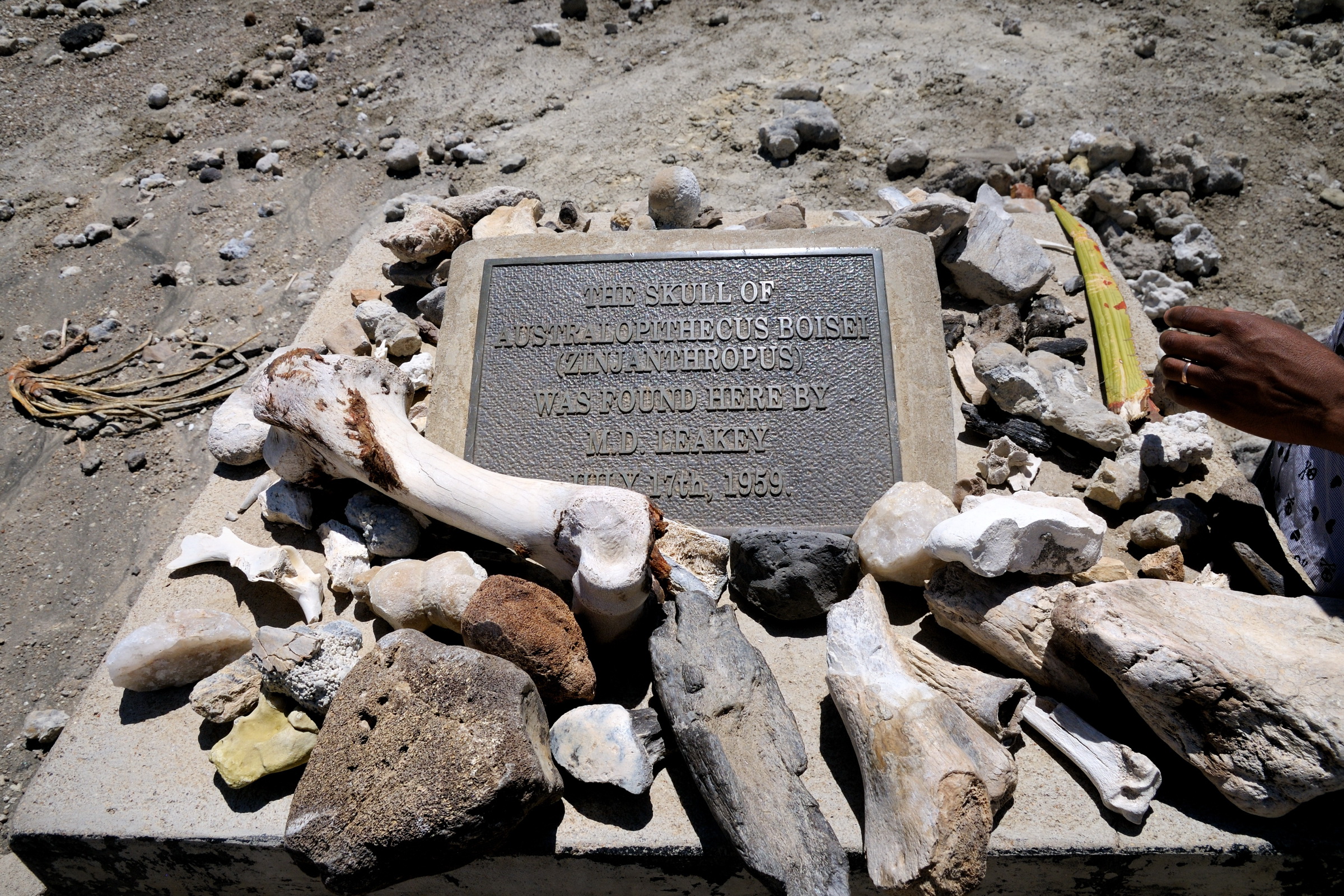|
Peninj Mandible
The Peninj Mandible(Peninj 1), also called Natron mandible, is the fossilized lower jaw and teeth of an australopithecine specimen, likely that of '' Australopithecus boisei'' or a similar population. It was discovered in West Lake Natron, in Ngorongoro District of Arusha Region of Tanzania by Kamoya Kimeu, Glynn Isaac, and Richard Leakey in 1964. This mandible (jaw) is estimated to be 1.5 million years old and it is characterized as having a robust build with large molars and reduced incisors. The specimen is believed to be an adult male. Discovery Peninj 1 was found in 1964 at a site in Tanzania called Peninj, west of Lake Natron and about 80 km (50 miles) from Olduvai Gorge, a major paleoanthropological site. On the 11th of January, fossil hunter Kamoya Kimeu was crossing the western side of Lake Natron as part of a team led by Richard Leakey when he discovered the mandible buried in ancient volcanic ash ''in situ.'' Later that year, Louis Leakey, his wife Mary Leakey a ... [...More Info...] [...Related Items...] OR: [Wikipedia] [Google] [Baidu] |
Australopithecus Boisei
''Paranthropus boisei'' is a species of australopithecine from the Early Pleistocene of East Africa about 2.5 to 1.15 million years ago. The holotype specimen, OH 5, was discovered by palaeoanthropologist Mary Leakey in 1959, and described by her husband Louis a month later. It was originally placed into its own genus as "''Zinjanthropus boisei''", but is now relegated to '' Paranthropus'' along with other robust australopithecines. However, it is also argued that ''Paranthropus'' is an invalid grouping and synonymous with ''Australopithecus'', so the species is also often classified as ''Australopithecus boisei''. Robust australopithecines are characterised by heavily built skulls capable of producing high stresses and bite forces, and some of the largest molars with the thickest enamel of any known ape. ''P. boisei'' is the most robust of this group. Brain size was about , similar to other australopithecines. Some skulls are markedly smaller than others, which is taken as ... [...More Info...] [...Related Items...] OR: [Wikipedia] [Google] [Baidu] |
Peninj
Peninj is a pre-historic site located in Pinyinyi ward of Ngorongoro District in Arusha Region, Tanzania Tanzania (; ), officially the United Republic of Tanzania ( sw, Jamhuri ya Muungano wa Tanzania), is a country in East Africa within the African Great Lakes region. It borders Uganda to the north; Kenya to the northeast; Comoro Islands .... This the site where the Peninj Mandible was discovered in 1964. References {{Arusha-geo-stub Ngorongoro District ... [...More Info...] [...Related Items...] OR: [Wikipedia] [Google] [Baidu] |
Tanzania
Tanzania (; ), officially the United Republic of Tanzania ( sw, Jamhuri ya Muungano wa Tanzania), is a country in East Africa within the African Great Lakes region. It borders Uganda to the north; Kenya to the northeast; Comoro Islands and the Indian Ocean to the east; Mozambique and Malawi to the south; Zambia to the southwest; and Rwanda, Burundi, and the Democratic Republic of the Congo to the west. Mount Kilimanjaro, Africa's highest mountain, is in northeastern Tanzania. According to the United Nations, Tanzania has a population of million, making it the most populous country located entirely south of the equator. Many important hominid fossils have been found in Tanzania, such as 6-million-year-old Pliocene hominid fossils. The genus Australopithecus ranged across Africa between 4 and 2 million years ago, and the oldest remains of the genus ''Homo'' are found near Lake Olduvai. Following the rise of '' Homo erectus'' 1.8 million years ago, humanity spread ... [...More Info...] [...Related Items...] OR: [Wikipedia] [Google] [Baidu] |
Kamoya Kimeu
Kamoya Kimeu (1938 – 20 July 2022) was a Kenyan paleontologist and curator, whose contributions to the field of paleoanthropology were recognised with the National Geographic Society's LaGorce Medal and with an honorary doctorate of science degree from Case Western Reserve University. Early life and education Kamoya Kimeu was born in 1938 in Makueni County, a rural area of southern Kenya, to Philomena Mwelu and Kimeu Mbalu. His father was a goat herder, but at the time of Kamoya's birth, was away working on a railroad construction project. Young Kamoya Kimeu attended a Christian missionary school for six years, but left once he was old enough to herd the family goats in the field. The native language of his family was Kikamba. He also learned to speak English and Swahili, which proved invaluable in later life, when he translated for visiting scientists with whom he worked. Career Kimeu began to work in paleoanthropology as a laborer for Louis Leakey and Mary Leakey in th ... [...More Info...] [...Related Items...] OR: [Wikipedia] [Google] [Baidu] |
Richard Leakey
Richard Erskine Frere Leakey (19 December 1944 – 2 January 2022) was a Kenyan paleoanthropologist, conservationist and politician. Leakey held a number of official positions in Kenya, mostly in institutions of archaeology and wildlife conservation. He was Director of the National Museum of Kenya, founded the NGO WildlifeDirect and was the chairman of the Kenya Wildlife Service. Leakey co-founded the Turkana Basin Institute in an academic partnership with Stony Brook University, where he was an anthropology professor. He served as the chair of the Turkana Basin Institute until his death. Early life Earliest years Richard Erskine Frere Leakey was born on 19 December 1944 in Nairobi. As a small boy, Leakey lived in Nairobi with his parents, Louis Leakey, curator of the Coryndon Museum, and Mary Leakey, director of the Leakey excavations at Olduvai, and his two brothers, Jonathan and Philip. The Leakey brothers had a very active childhood. All the boys had ponies and belo ... [...More Info...] [...Related Items...] OR: [Wikipedia] [Google] [Baidu] |
Ngorongoro District
Ngorongoro is one of the seven districts of the Arusha Region in Tanzania. The District covers an area of . It is bordered to the north by Kenya, to the east by Monduli District, the northeast by Longido District, and to the south by the Karatu District. The western border is the Serengeti District in Mara Region. Ngorongoro District is home to the Ngorongoro Crater and was named after it. The administrative seat is the town of Loliondo. The district is home to the Ngorongoro Conservation Area which is a UNESCO World Heritage Site. According to the 2002 Tanzania National Census, the population of the Ngorongoro Region was 129,776. By 2012, the population of the district was 174,278. Within the district are the Ngorongoro Crater and active volcano Ol Doinyo Lengai. The district plays host to parts of the wildebeest migration. While not part of the park, as such, much of the district is within the same Serengeti- Mara Ecosystem, which is defined by the limits of the annual wildli ... [...More Info...] [...Related Items...] OR: [Wikipedia] [Google] [Baidu] |
Arusha Region
Arusha City is a Tanzanian city and the regional capital of the Arusha Region, with a population of 416,442 plus 323,198 in the surrounding Arusha District Council (2012 census). Located below Mount Meru (Tanzania), Mount Meru on the eastern edge of the eastern branch of the East African Rift, Great Rift Valley, Arusha City has a temperate climate. The city is close to the Serengeti National Park, the Ngorongoro Conservation Area, Lake Manyara National Park, Olduvai Gorge, Tarangire National Park, Mount Kilimanjaro, and Mount Meru (Tanzania), Mount Meru in the Arusha National Park. The city is a major international diplomatic hub. It hosts the African Court on Human and Peoples' Rights, African Court of the African Union and is the capital of the East African Community. From 1994 to 2015, the city also hosted the International Criminal Tribunal for Rwanda, but that entity has ceased operations. It is a multicultural city with a majority Tanzanian population of mixed backgroun ... [...More Info...] [...Related Items...] OR: [Wikipedia] [Google] [Baidu] |
Glynn Isaac
Glynn Llywelyn Isaac (19 November 1937 – 5 October 1985) was a South African archaeologist who specialised in the very early prehistory of Africa, and was one of twin sons born to botanists William Edwyn Isaac and Frances Margaret Leighton. He has been called the most influential Africanist of the last half century, and his papers on human movement and behavior are still cited in studies a quarter of a century later.Jeanne Sept and David Pilbeam, Eds, "Casting the Net Wide," Oxbow Books, 2011. Biography He took his first degree from the University of Cape Town The University of Cape Town (UCT) ( af, Universiteit van Kaapstad, xh, Yunibesithi ya yaseKapa) is a public research university in Cape Town, South Africa. Established in 1829 as the South African College, it was granted full university statu ... in 1958 before studying for his Doctor of Philosophy, PhD at Peterhouse, Cambridge which he completed in 1969. He was also Warden for Prehistoric Sites in Kenya betwe ... [...More Info...] [...Related Items...] OR: [Wikipedia] [Google] [Baidu] |
Louis Leakey
Louis Seymour Bazett Leakey (7 August 1903 – 1 October 1972) was a Kenyan-British palaeoanthropologist and archaeologist whose work was important in demonstrating that humans evolved in Africa, particularly through discoveries made at Olduvai Gorge with his wife, fellow palaeoanthropologist Mary Leakey. Having established a programme of palaeoanthropological inquiry in eastern Africa, he also motivated many future generations to continue this scholarly work. Several members of the Leakey family became prominent scholars themselves. Another of Leakey's legacies stems from his role in fostering field research of primates in their natural habitats, which he saw as key to understanding human evolution. He personally focused on three female researchers, Jane Goodall, Dian Fossey, and Birutė Galdikas, calling them The Trimates. Each went on to become an important scholar in the field of primatology. Leakey also encouraged and supported many other PhD candidates, most notably from ... [...More Info...] [...Related Items...] OR: [Wikipedia] [Google] [Baidu] |
Mary Leakey
Mary Douglas Leakey, FBA (née Nicol, 6 February 1913 – 9 December 1996) was a British paleoanthropologist who discovered the first fossilised ''Proconsul A proconsul was an official of ancient Rome who acted on behalf of a consul. A proconsul was typically a former consul. The term is also used in recent history for officials with delegated authority. In the Roman Republic, military command, or ...'' skull, an extinct ape which is now believed to be ancestral to humans. She also discovered the robust ''Zinjanthropus'' skull at Olduvai Gorge in Tanzania, eastern Africa. For much of her career she worked with her husband, Louis Leakey, at Olduvai Gorge, where they uncovered fossils of ancient hominines and the earliest hominins, as well as the stone tools produced by the latter group. Mary Leakey developed a system for Taxonomy (general), classifying the stone tools found at Olduvai. She discovered the Laetoli#Hominin footprints, Laetoli footprints, and at the Laetoli s ... [...More Info...] [...Related Items...] OR: [Wikipedia] [Google] [Baidu] |
OH 5
''Paranthropus boisei'' is a species of australopithecine from the Early Pleistocene of East Africa about 2.5 to 1.15 million years ago. The holotype specimen, OH 5, was discovered by palaeoanthropologist Mary Leakey in 1959, and described by her husband Louis a month later. It was originally placed into its own genus as "''Zinjanthropus boisei''", but is now relegated to ''Paranthropus'' along with other robust australopithecines. However, it is also argued that ''Paranthropus'' is an invalid grouping and synonymous with ''Australopithecus'', so the species is also often classified as ''Australopithecus boisei''. Robust australopithecines are characterised by heavily built skulls capable of producing high stresses and bite forces, and some of the largest molars with the thickest enamel of any known ape. ''P. boisei'' is the most robust of this group. Brain size was about , similar to other australopithecines. Some skulls are markedly smaller than others, which is taken as evi ... [...More Info...] [...Related Items...] OR: [Wikipedia] [Google] [Baidu] |
Hominini
The Hominini form a taxonomic tribe of the subfamily Homininae ("hominines"). Hominini includes the extant genera ''Homo'' (humans) and '' Pan'' (chimpanzees and bonobos) and in standard usage excludes the genus ''Gorilla'' (gorillas). The term was originally introduced by Camille Arambourg (1948). Arambourg combined the categories of ''Hominina'' and ''Simiina'' due to Gray (1825) into his new subtribe. Traditionally, chimpanzees, gorillas and orangutans were grouped together as pongids. Since Gray's classification, evidence has accumulated from genetic phylogeny confirming that humans, chimpanzees, and gorillas are more closely related to each other than to the orangutan. The former pongids were reassigned to the subfamily Hominidae ("great apes"), which already included humans, but the details of this reassignment remain contested; within Hominini, not every source excludes gorillas, and not every source includes chimpanzees. Humans are the only extant species in the ... [...More Info...] [...Related Items...] OR: [Wikipedia] [Google] [Baidu] |






